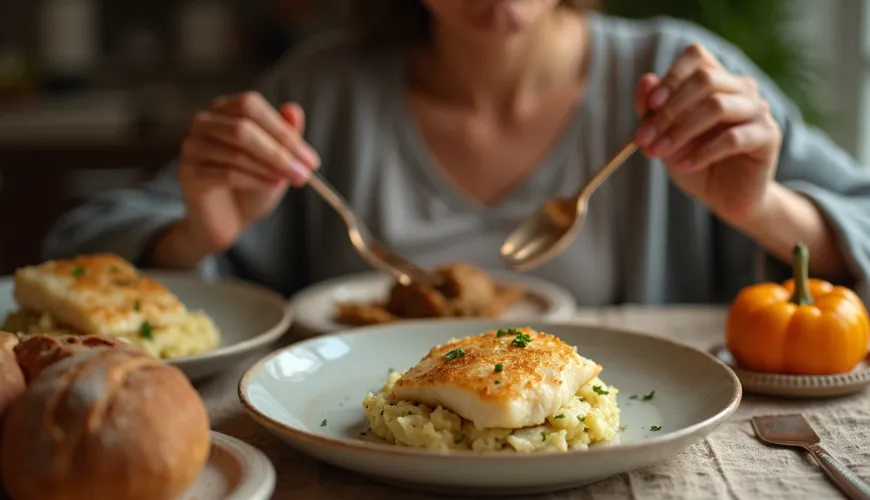
What does a pancreas diet look like and what you need to know

What Does a Gentle Diet Look Like for Pancreatic Disease? And What If Diabetes is Involved?
The pancreas is a discreet but vital organ. It lies deep in the abdominal cavity and performs two essential functions: it produces digestive enzymes and regulates blood sugar levels through hormones, primarily insulin. However, when the pancreas becomes diseased, its role changes dramatically—and so does the way food should be approached. A diet for pancreatic disease is a key element in treatment and prevention of complications.
Abdominal pain after eating, loss of appetite, bloating, or diarrhea—all these can be symptoms that the pancreas isn't functioning properly. The most common problems are acute or chronic inflammation of the pancreas, known as pancreatitis. And if diabetes is added to the equation, the diet needs to be adjusted even more strictly.
Why is a Pancreatic Diet So Important?
The pancreas has one disadvantage: it regenerates poorly. Once it's damaged, its function often doesn't fully recover. Therefore, diet is one of the few tools to stabilize its condition. A diet for an irritated or diseased pancreas has several main objectives: to spare the pancreas, reduce the production of digestive enzymes, prevent pain or cramps, and at the same time provide the body with necessary nutrients.
Does it sound like a challenge? Perhaps. But a well-designed diet plan for the pancreas can be surprisingly tasty, varied, and doesn't require too complicated adjustments. It just takes knowing a few basic rules.
What Should a Gentle Diet for a Diseased Pancreas Look Like?
First, it should be understood that this is not a temporary restriction. A diet for chronic pancreatic disease is long-term—and for some patients, lifelong. The foundation is a gentle, easily digestible diet with low fat content. Fats are among the main enemies of an irritated pancreas—their digestion is demanding and stimulates a strong release of pancreatic enzymes.
If you want to tidy up your diet a bit, some foods should preferably disappear from it—or at least be significantly limited. Start with heavier meats, such as pork belly, fatty pork, and poultry, typically goose or duck—even though they taste great, your body doesn't exactly love them. Likewise, fried delights and deep-fried goodies, which may be crunchy and smell amazing, aren't very beneficial for health.
Next on the list are full-fat dairy products—cheeses, creams, yogurts with more than 3% fat—all of these further burden digestion. Butter and lard? Only with great caution. And while nuts and seeds are generally healthy, in larger quantities they're not much of a hit either. As for spices—too much is harmful, and if food is very spicy, overcooked, or too salty, your digestion definitely won't thank you.
Alcohol is another classic—pleasant in company, but the body processes it quite complexly. Fatty sweets—like whipped cream cakes or chocolates—are fine to indulge in only occasionally. And let's not forget drinks—carbonated sodas and artificially sweetened drinks may give the impression of refreshment, but in reality, they often hinder the body.
Conversely, easily digestible, simple meals prepared by boiling, steaming, or baking without fat are suitable. A regular regime is also important—ideally 5 to 6 smaller portions a day, eaten slowly and calmly. Sometimes keeping a food diary helps, where patients record which foods make them feel good and which don't.
An interesting example is the story of Mrs. Ludmila from Brno. After several hospitalizations due to chronic pancreatitis, she decided to radically change her diet. At first, it meant giving up all her favorite foods—including fried schnitzels and sweet desserts. Gradually, however, she discovered new recipes, learned to prepare vegetable soups without fat, creamy risottos with minimal oil, and even fragrant baked fish. Today she says, "I would never have believed that I would look forward to steamed food. But when I know it doesn't make me feel sick, it suddenly tastes much better."
What If Diabetes is Involved?
The situation becomes more complicated if the patient is dealing with both pancreatic issues and diabetes. A diet for the pancreas and diabetes requires even greater diligence—not only sparing the pancreas but also carefully monitoring carbohydrate intake. This is especially tricky for patients with so-called secondary diabetes (resulting from pancreatic damage)—they often have fluctuating blood sugar levels and need to precisely time their food intake with insulin dosage.
The diet should always be tailored—ideally with the help of a professional, such as a nutritionist. Even so, there are some general rules: it's good to favor complex carbohydrates with a low glycemic index (such as whole grain products, legumes, or vegetables), limit sweets and white bread, eat and exercise regularly, and remember to check blood sugar levels before and after meals.
Combining these two diseases demands high discipline—but with the right diet, it's possible to live a relatively full life without pain and without sugar swings.
Inspiration for Simple Recipes on a Pancreatic Diet
If you're used to traditional Czech cuisine, it may initially seem like there's almost nothing left to eat. But the opposite is true. Recipes for a pancreatic diet can be tasty, nutritious, and varied—they just require a slightly different approach. Here are tips for 2 simple meals that anyone can prepare.
Creamy Vegetable Soup without Fat
Ingredients:
- 2 carrots
- 1 parsley root
- a piece of celery
- 1 potato
- salt
- a pinch of marjoram
Instructions: Cut the vegetables into cubes, cover with water, and cook until soft. Then blend to a creamy consistency and season with salt and marjoram. You can add a piece of whole grain bread or boiled pasta to the soup.
Steamed Cod with Mashed Potatoes
Ingredients:
- cod fillet (preferably frozen, skinless)
- 2 potatoes
- a little vegetable oil
- lemon juice
- dill
Instructions: Steam the cod with a little water, lemon, and dill. Boil the potatoes and mash them into a puree with a small amount of vegetable oil. Serve together. Simple, light, and yet nutritious food.
And what about sweets? On a strict diet, it's better to avoid them, but if the condition is stable, you can occasionally indulge in something gentle: for example, apple puree with a little cinnamon, stewed fruit without sugar, or simple rice pudding with low-fat cottage cheese.
Food as Medicine
It's fascinating how much influence diet can have on health. With a diseased pancreas, it's not about any modern fads—quite the opposite. A diet for pancreatic disease resembles what was eaten in the past: simple, homemade, and unburnt dishes prepared with love and consideration for the body.
As the physician Hippocrates wrote in the 19th century: "Let food be thy medicine and medicine be thy food." For a diseased pancreas, this holds quite literally. While it's not possible to miraculously heal a severely damaged organ with food, a well-chosen diet can significantly alleviate symptoms, delay complications, and contribute to a better quality of life.
Whether it's acute inflammation, chronic disease, or a combination with diabetes, one thing is certain—changing the diet is the first step to relief and stabilization. And even though it may seem like a limitation, over time many patients find that they actually start enjoying food more. Because when we know what makes us feel good, it's not about quantity or complexity. It's about balance.

